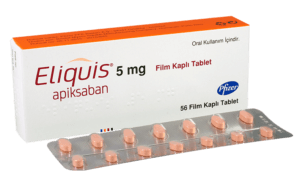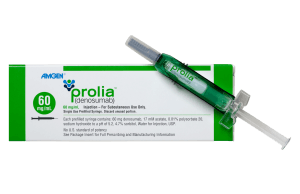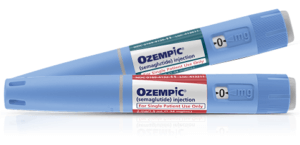 Pain relief is one of the most urgent considerations when doctors treat their patients, sometimes coming before addressing the causes of the pain. Local anesthetics can be used to reversibly block the conduction of nerve signals from near their site of administration up into the brain, thereby producing temporary loss of sensation in a limited area. Applying local anesthetics or ice packs to relieve pain from injury or allow for short-term surgical or manipulative therapy makes patients more comfortable and allows for more thorough attention to the immediate situation.
Pain relief is one of the most urgent considerations when doctors treat their patients, sometimes coming before addressing the causes of the pain. Local anesthetics can be used to reversibly block the conduction of nerve signals from near their site of administration up into the brain, thereby producing temporary loss of sensation in a limited area. Applying local anesthetics or ice packs to relieve pain from injury or allow for short-term surgical or manipulative therapy makes patients more comfortable and allows for more thorough attention to the immediate situation.
However, a different approach is necessary in cases where the pain is long-lasting and comes from a chronic condition. People have searched from time immemorial for an effective way to dull pain because it is an inherent part of living that we can only dream of escaping. There has been limited progress in finding specific ways to provide pain relief for some causes of chronic pain, but overall, the ideal of a universal way to provide pain relief, whatever the cause, remains a distant dream.
It has become increasingly clear that finding better ways of managing pain will have profound effects on the quality of life of all people who need to be using pain relievers. This has been highlighted in a recent study that found that there is a strong correlation between the incidence of anxiety and depression and chronic pain. “US adults living with chronic pain are approximately 5 times more likely to have clinically significant unremitted anxiety or depression compared with those not living with chronic pain.” Furthermore, more than half of those living with unremitted anxiety or depression symptoms also suffer from chronic pain.
To understand the significance of these findings, it helps to define in a bit more detail what the main terms – chronic pain and anxiety/depression – meant in terms of this study.
Measuring chronic pain levels
Rating the degree of pain is highly subjective, with some people being able to tolerate it with relative ease and others being unable to deal with even the lowest level of discomfort. Many efforts have been made to objectivize pain levels, but these tend to focus on a single underlying condition, and they are still based on the subjective rating by patients. One example is WOMAC, which has patients grade their pain from osteoarthritis on a scale of 0 to 100, with higher scores reflecting worse outcomes. Another is the McGill Pain Questionnaire (MPQ), which consists of three separate measures – a pain-rating index, the number of words chosen to describe the pain, and the patient’s present pain intensity. The MPQ is the most extensive tool to measure pain affection.
Subjective pain rating is influenced by many external factors, such as the person’s social or work situations, the setting, and the history of any prior incidents or injuries. They may all influence pain perception and show large differences between individuals faced with very similar pain triggers.
Measuring degrees of anxiety and depression

Doctors rely on grading the degree of a patient’s disorder based on subjective reporting. The most common options are:
For Depression:
The Patient Health (PHQ-9) Questionnaire: This is a nine-item questionnaire based on the DSM-5 criteria for depression. It assesses the frequency of symptoms over the prior two weeks with a scoring system that categorizes depression as minimal, mild, moderate, moderately severe, or severe. It’s important to note that there aren’t ways to express these numerically, which makes comparisons between different patients and techniques quite difficult.
The Beck Depression Inventory (BDI) is a 21-item self-report inventory measuring the severity of depression. It is useful in both clinical and research settings because it produces a numerical result that enables comparisons between different tests on the same patient, tracking of development over time, and comparative studies between different patients.
The Center for Epidemiologic Studies Depression Scale (CES-D) is a similar 20-item scale designed to measure depressive symptoms in the general population. It also produces a numerical assessment of the level of depression,
For Anxiety:
The Generalized Anxiety Disorder-7 (GAD-7) test is a questionnaire that evaluates the frequency of anxiety symptoms over the prior two weeks, with scores that range from minimal to severe anxiety.
The Beck Anxiety Inventory (BAI) is similar to the BDI, with questions focussing on an aspects of anxiety instead of depression. It also produces a numerical rating of the degree of anxiety.
The State-Trait Anxiety Inventory (STAI) tool differentiates between state anxiety (S-Anxiety—temporary and situation-specific) and trait anxiety (TS-Anxiety—a general tendency to be anxious). S-Anxiety is useful for measuring how stress or environmental changes affect a person in real-time. T-Anxiety identifies individuals who are more vulnerable to anxiety disorders or stress-related issues.
The importance of treating nerve pain and anxiety or depression as a single condition.
Given the very high co-incidence of anxiety or depression that could be attributed to pain, it is important that healthcare providers take a holistic approach and look at the whole picture when deciding on the most appropriate treatment. For example, prescribing medications that address only one aspect can not only fail to produce a positive outcome but could even exacerbate the result. For this reason, patients who are seeking help for prolonged depression or anxiety should step outside that narrow framework and first undergo a thorough examination to see if there are underlying sources of pain that they have simply grown used to living with and which, without them realizing it, are subconsciously triggering the reaction of depression or anxiety.
Pain can come from any location in the body and can even be generated inside the brain without any physical cause. An example of this is the sensation that people who have undergone an amputation of a lower limb or arm encounter when they still “feel” sharp pains in the limb. Also, studies of nerve conductions have shown that the passage of signals via peripheral nerves through the spinal cord and up into the brain can be interrupted by nerve damage (neuropathy), and this can generate the sensation of pain even when nothing is happening at the original site of the signal.
- Diabetes is the leading cause of peripheral neuropathy, giving rise to feelings of numbness, tingling, and pain in the extremities.
- Infections such as shingles, AIDS, and Lyme disease can cause neuropathy both through direct viral effects and nerve inflammation.
- Autoimmune disorders like lupus and multiple sclerosis also directly affect the nerves.
- Chronic substance abuse leads to neuropathy due to direct nerve toxicity and nutritional deficiencies.
- Some treatments for cancer, such as platinum-based drugs, cause peripheral neuropathy.
- Exposure to heavy metals (e.g., lead, arsenic, mercury) or industrial chemicals can damage nerves.
- Herniated discs that compress spinal nerves can lead to pain, numbness, or weakness in the lower body, while nerve compression in the neck and shoulder region can cause hand pain in the arm and hand.
Probably the most common cause of non-specific pain is aging. Nerve function naturally declines with age, making older people more susceptible to neuropathy, especially when combined with other risk factors.
Solutions for chronic pain

However, having said that disclaimer, I can highlight a few drugs that I think have special relevance to this subject, and I am happy to mention them here as a supplementary comment to anything that may be indicated as a possible treatment:
- Low-dose Naltrexone (LDN) is a new form of the drug developed many years ago as an opioid substitute to wean addicts off their habit-forming painkillers. In extremely low doses (typically around 4.5 mg compared to 50-100 mg of the full dose as a substitute), LDN has been found to exert analgesic effects (pain relief) as well as anti-inflammatory effects. Most interesting in the context of this suggestion is that studies on the effects of LDN have shown that it has directly positive effects on depression. This makes it a dual-action treatment, addressing both the pain aspects and the depression aspects in a single medication.
- Lyrica is prescribed to treat nerve pain caused by viruses, fibromyalgia, or spinal cord damage. More significantly in this case, it also is being prescribed for cases of generalized anxiety disorder. This makes it another dual-action treatment that can address both aspects in a single medication.
FAQs
What triggers neuropathy flare-ups?
Neuropathy flare-ups can be triggered by various factors depending on the underlying cause. Common triggers include uncontrolled blood sugar levels in diabetics, excessive alcohol consumption, nutritional deficiencies (like B vitamins), physical trauma, or prolonged pressure on nerves. Stress, infections, and certain medications may also exacerbate symptoms. Environmental factors, such as extreme temperatures, can worsen pain and sensitivity in individuals with neuropathy.
What is a natural remedy for nerve damage?
While there are no scientifically proven remedies that can restore damaged nerves to full functionality, there are some natural remedies for nerve damage that focus on promoting nerve health and reducing inflammation. B-complex vitamins (especially B1, B6, and B12) support nerve repair. Alpha-lipoic acid and omega-3 fatty acids, found in fish oil, may help reduce nerve pain and inflammation. Capsaicin cream, made from chili peppers, can provide topical relief.
How can I reverse neuropathy quickly?
There is no known way at present to reverse neuropathy. Controlling the underlying cause may help to prevent the damage from spreading further while nerve-supporting nutrients like B vitamins and alpha-lipoic acid, maintaining a healthy lifestyle, and seeking physical therapy can promote faster recovery.
What stops nerve pain immediately?
Topical treatments like lidocaine patches or capsaicin cream may provide immediate relief from nerve pain, but this lasts for a limited period and has to be reapplied as long as the cause of the pain persists. Over-the-counter pain relievers, such as Nurofen, can reduce inflammation-related pain. For severe pain, prescription medications like Neurotonin may work quickly. Applying ice packs or using relaxation techniques like deep breathing can temporarily alleviate acute discomfort, but these options only provide temporary relief, so addressing the root cause of the nerve pain is critical for long-term management.
Is heat good for nerve pain?
Heat can be beneficial for some types of nerve pain, especially when muscle tension or stiffness contributes to discomfort. Applying a warm compress or using a heating pad can improve circulation, relax muscles, and reduce pain. However, heat may not be suitable for all conditions, particularly when there is acute inflammation or swelling. In such cases, cold therapy might be more effective.
















